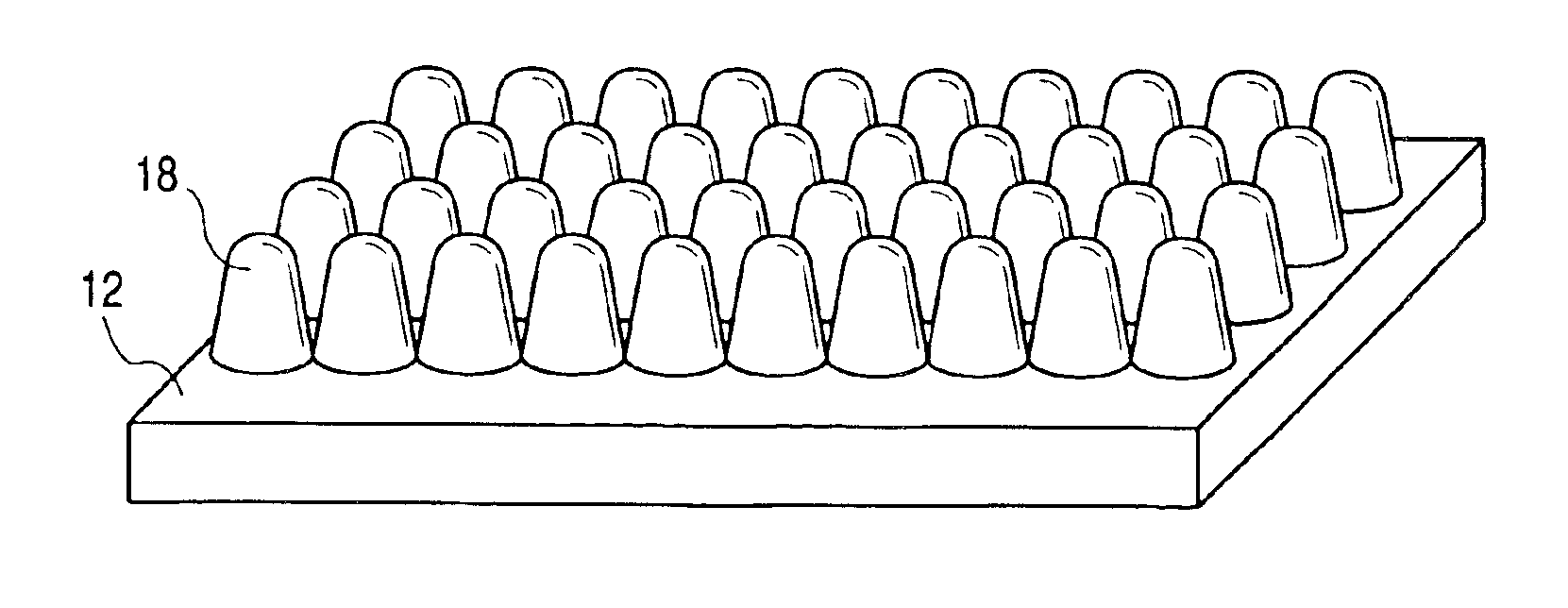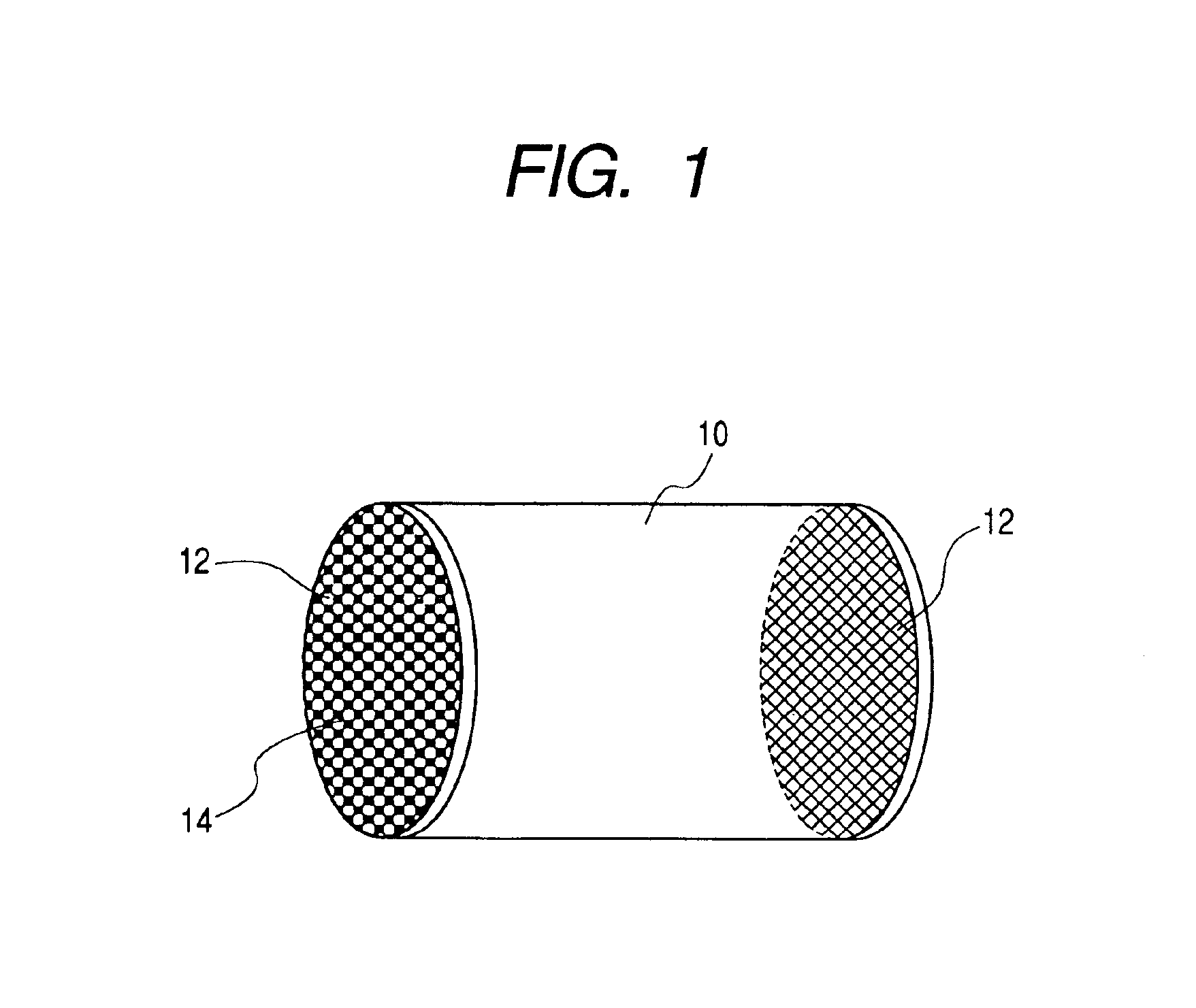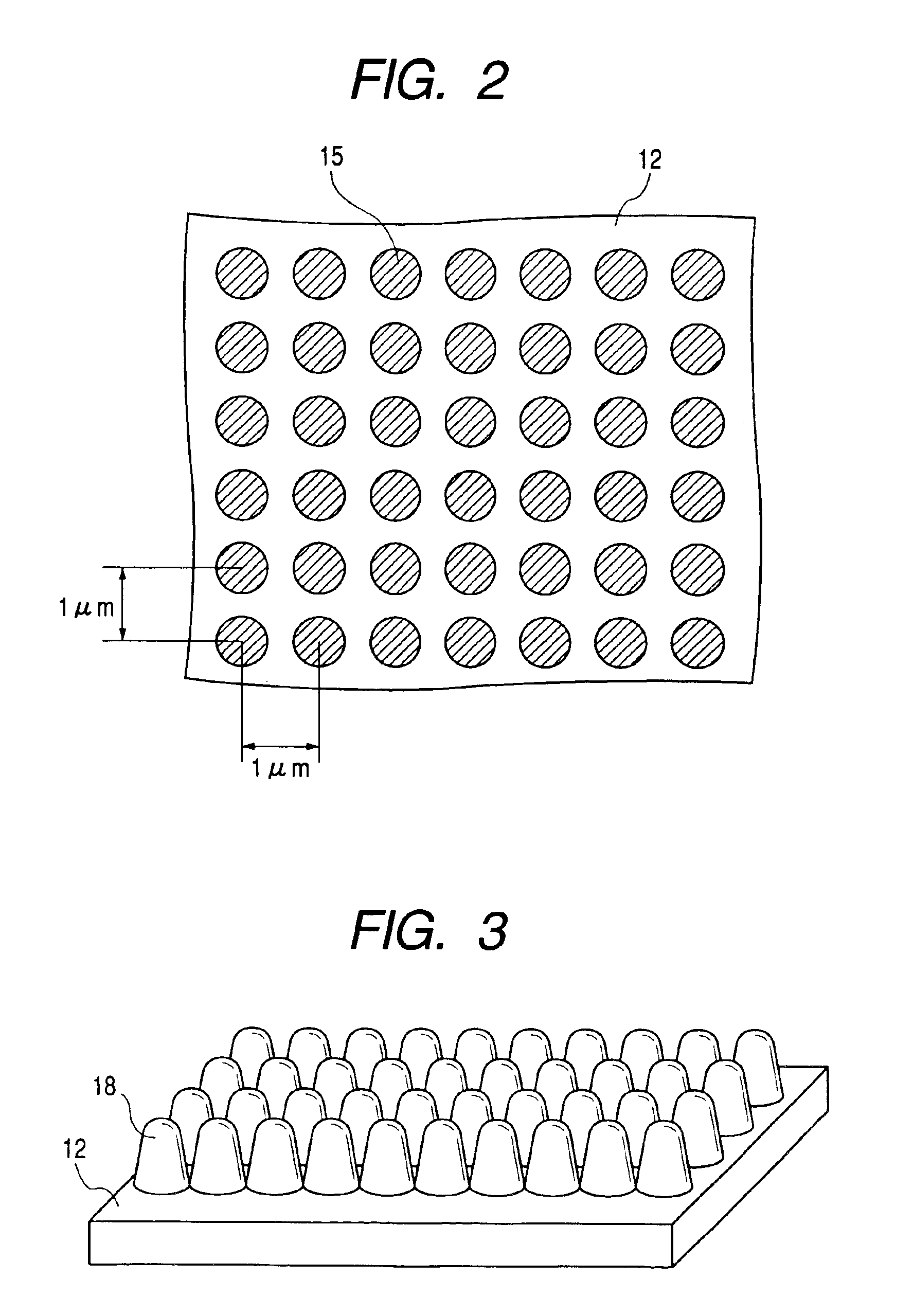Gradient-index lens, and method for producing the same
a technology of gradient index and lens, applied in the field of gradient index lenses, can solve the problems of affecting the insertion rate of the lens, the lens cost inevitably increases, and the above-mentioned methods, and achieve the effect of reducing the insertion loss and the reflected return
- Summary
- Abstract
- Description
- Claims
- Application Information
AI Technical Summary
Benefits of technology
Problems solved by technology
Method used
Image
Examples
example 1
[0061]FIG. 1 shows one embodiment of rod lenses of the invention.
[0062]A micro prismatic structure 14, in which the projections having a height of about 1 μm are aligned at a distance between neighboring projections (pitch) of 1 μm, is formed in both end faces 12 of a cylindrical, glass rod lens 10 having a diameter of 1 mm and having a refractive index profile that decreases toward the outer periphery thereof.
[0063]The rod lens 10 of FIG. 1 is fabricated according to the process mentioned below. The rod lens used herein is prepared according to an ion-exchanging process that comprises dipping a homogeneous cylindrical glass rod in a molten salt to thereby exchange the ions in the glass rod with the ions in the molten salt, and the ion concentration in the resulting rod lens gradually varies from the outer periphery toward the inside thereof to thereby make the rod lens have a refractive index profile.
[0064]The rod lens (hereinafter this will be simply referred to as “lens”) is cut ...
example 2
[0082]This Example is to demonstrate the applicability of the invention to a gradient-index lens formed in a planar substrate, or that is, to a planar gradient-index lens.
[0083]FIG. 5 shows a planar lens 20 of the invention. Like in Example 1, the lens face 22, or that is, the surface of the substrate 28 is processed to have a micro prismatic structure 24 with projections having a height of about 1 μm and aligned at a pitch of 1 μm.
[0084]In case where a glass substrate is used, the planar lens 20 is fabricated as follows: A metal task having micropores is formed on the substrate, and ions of a salt are diffused into the substrate through the micropores for ion-exchanging. As compared with the lens in Example 1, the refractive index profile in the surface of the lens thus fabricated herein is low. However, since the lens is fabricated according to the ion-exchanging method as above, the lens face surely has a refractive index profile.
[0085]In the same manner as in Example 1, a micro ...
PUM
 Login to View More
Login to View More Abstract
Description
Claims
Application Information
 Login to View More
Login to View More - R&D
- Intellectual Property
- Life Sciences
- Materials
- Tech Scout
- Unparalleled Data Quality
- Higher Quality Content
- 60% Fewer Hallucinations
Browse by: Latest US Patents, China's latest patents, Technical Efficacy Thesaurus, Application Domain, Technology Topic, Popular Technical Reports.
© 2025 PatSnap. All rights reserved.Legal|Privacy policy|Modern Slavery Act Transparency Statement|Sitemap|About US| Contact US: help@patsnap.com



